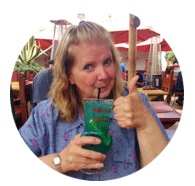What a year 2020 has been, right?
As travel writers, our job is to travel, experience new things, write about them, and find publications to share those stories with readers all over the world.
In late 2019 and early 2020, I submitted 12 articles with photo essays to several print magazines in my area. I was excited to find they’d be out during spring/summer/fall 2020.

When the pandemic hit, everything came to a screeching halt. Conversations with my editors were disheartening. Travel stories were not relevant now—no one was traveling.
I found it was best to stay positive and upbeat. Travel would re-open at some point, and I wanted to be ready when it did.
I spent my downtime editing images, researching new stories from old travels, working on collaborations, taking classes, and reading books about travel and tourism.
When Governor Cuomo began to re-open New York, I decided to revisit the dozen or so stories I’d submitted earlier.
“What could it hurt?” I thought to myself.
Maybe I could figure out a way to get them front-and-center again—on top of the pile I knew waited on my editors’ desks.
Here are a few of the things I did, and maybe, in mimicking them or coming up with ideas of your own, you’ll see some of your side-lined articles in print as well.
1. Visit the website.
The very first thing I did was to visit the website of the place I’d covered in a story. If the restaurant, museum, hotel, or attraction was open, I took note of it.
2. Email contacts.
I found the right person to contact. It might have been a manager, owner, or PR contact I’d worked with before. I requested a phone call, explaining I’d like to talk about my article, that I was hoping they could answer some questions. They were always happy to speak with me—they knew I’d be helping promote travel to their area again.
3. Review re-opening phases.
I had a list of questions prepared before I picked up the phone. I wanted to talk about what re-opening phase they were in as well as any safety measures they were taking to make staff and visitors feel comfortable.
For instance, Ausable Chasm is an outdoor hiking and adventure venue. The manager explained how they were taking reservations for admittance. Only a certain number of people were allowed onto the property at one time, which helped them practice social distancing.
They were also making loops every two hours—this meant a team of workers would wipe down miles of metal railings throughout the park to help stop the spread of COVID-19.
4. Document safety protocols.
I took copious notes or taped the updates, so I could refer to them later after we’d hung up the phone, and I’d started working on an email to my editor. It’s always important to be factually correct when writing a story—but now, in the middle of a world crisis, even more so.
5. Reach out to the editor, offer a new angle.
Now it was time to convince an editor the time was right to revisit my article, with some changes to make it relevant again. Some writers might think this was the most challenging part—but for me, it was the easiest.
I knew they wanted fresh content. I also knew travel was starting to happen—even though it was much closer to home at the moment.
By talking bullet points, covering ways I’d tweak my stories to have them make sense, every editor was receptive and gave me the go-ahead.
6. Tweak and polish stories already submitted.
Next I added the details I had gathered to my existing article, updating them for life in the time of COVID-19. Maybe the venue had new, shorter hours. Perhaps they’d hired more people to help keep up with the new disinfecting protocols, sometimes the visitor capacity had changed, or it was only curbside pickup and delivery at a restaurant for the time being.
By paying attention to all the little details, adding just that extra paragraph or two, all 12 articles moved to the front of the line.
Two of them will be out in a local print magazine this Friday, and I’m going to jump for joy when I see them!
7. Pitch another.
In follow-up conversations with each editor, I brought up another story. I told them I’d already called the venue, gotten the lowdown on current conditions during the pandemic, already had the photos to accompany my piece, they just had to say “Yes.”
What do you think happened?
We’re travel writers—we’re good thinking on our feet, rolling with the punches, adapting to different situations.
No one could have predicted this year to turn out the way it did. But, we can predict how we’ll react to it. Travel writers are savvy, inventive, courageous, imaginative, and adventurous.
I predict we’ll keep rising to the challenge—staying safe, remaining smart, but continuing to write about our dream of travel. It’s who we are. Simple as that.

